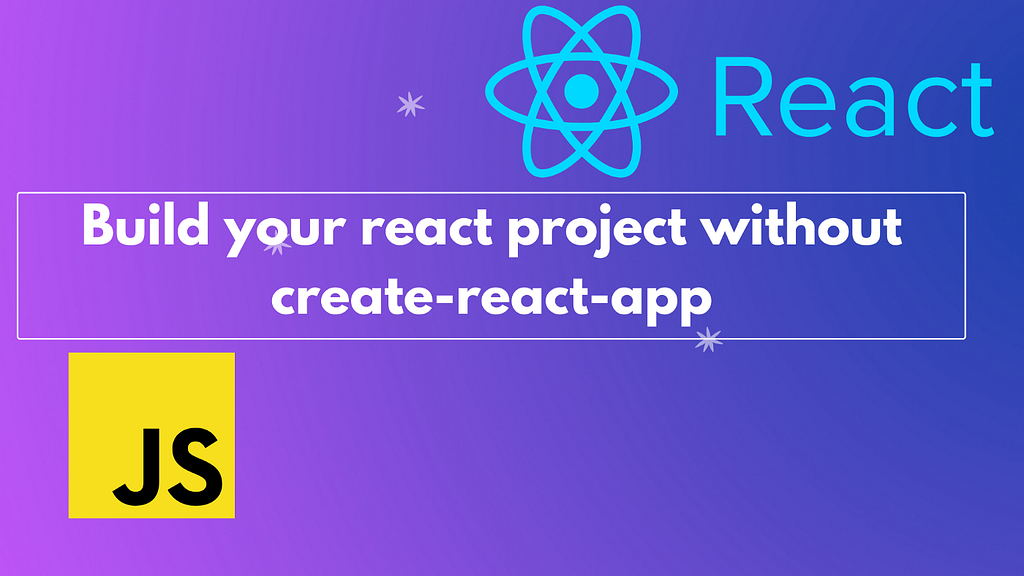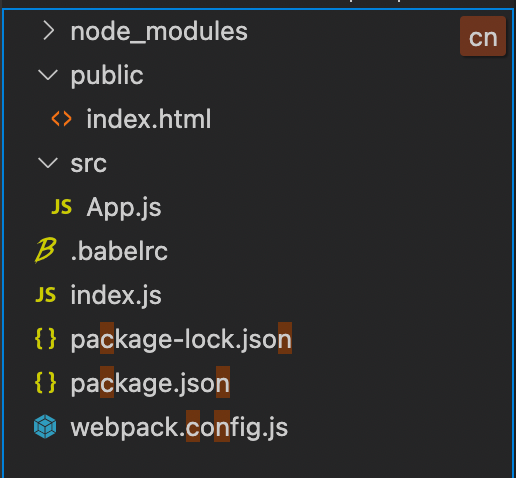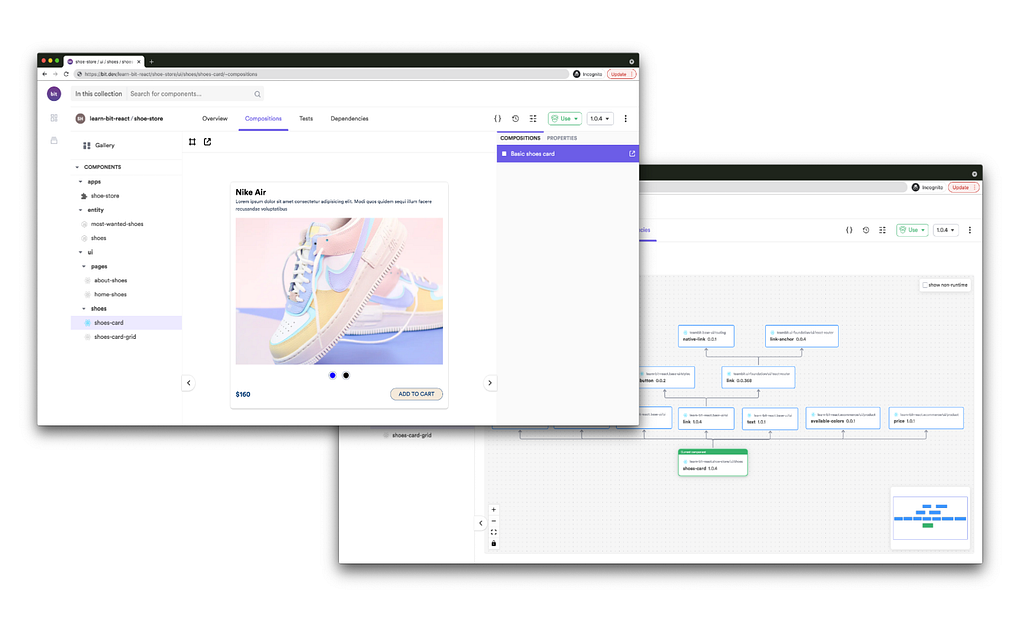This content originally appeared on Bits and Pieces - Medium and was authored by Kannan Nagasamy

This article talks about the process of creating react app without using any libraries or frameworks such as “create-react-app” , “NextJS” etc.
Prerequisites concepts to know
- Webpack — helps in bundling our code into one single file
- Babel — used to convert ECMAScript 2015+ (ES6+) code into a backwards compatible version of JavaScript that can be run by older JavaScript engines.
- Node.js — installing node, creating package.json and installing node modules using npm
This article will help us to understand
- How webpack and babel work in a more practical sense;
- The actual starting to ending flow of building the React app;
- How development and production build is being setup and its significance;
- Setting up the server details thats required;
- Writing webpack and babel config files and understanding the logic that exists there;
- How we can configure client-side and server-side rendering;
- Understanding how HMR is works in React.
Source code
- Repository — https://github.com/kannanagasamy/react-app-without-cra
- Branch — main
Step by Step
1. Make sure node is installed in your system
Install Node.js in your system and make sure its installed by typing node -v in your terminal.
2. Create project folder and package.json
Create a project folder of any name and navigate to the folder and then use npm init to create a package.json file inside the folder. Navigate to the folder.
3. Install webpack dependencies
npm i --save-dev webpack webpack-cli webpack-dev-server
- webpack — Will allow us to bundle all of our code into a final build
- webpack-cli — CLI tool for providing a flexible set of commands for developers to increase speed when setting up a custom webpack project. If you’re using webpack v4 or later and want to call webpack from the command line, you need this
- webpack-dev-server — Webpack dev server is a mini Node.js Express server.It uses a library called SockJS to emulate a web socket. Will enable us to create a localhost dev environment
4. Install the Babel dependencies
npm i --save-dev babel-loader @babel/preset-env @babel/core
@babel/plugin-transform-runtime
@babel/preset-react
babel-eslint
@babel/runtime
@babel/cli
- babel-loader — allows transpiling JavaScript files using babel and webpack. exposes a loader-builder utility that allows users to add custom handling of Babel’s configuration for each file that it processes.
- @babel/preset-env — allows you to use the latest JavaScript without needing to micromanage which syntax transforms (and optionally, browser polyfills) are needed by your target environment(s). This both makes your life easier and JavaScript bundles smaller!
- @babel/core — core package
- @babel/plugin-transform-runtime — A plugin that enables the re-use of Babel’s injected helper code to save on codesize.
- @babel/preset-react — use react preset when we are using Reactjs. Helps in converting html files to react based file
- babel-eslint — parser that allows ESLint to run on source code that is transformed by Babel
- @babel/runtime — package that contains a polyfill and many other things that Babel can reference.
- @babel/cli — command line interface to use babel
5. Install required Linters and path
npm i --save-dev eslint eslint-config-airbnb-base
eslint-plugin-jest
eslint-config-prettier
path
6. Install react and react-dom
npm i react react-dom
7. Create index.html file
Create folder called “public” in the root of the project. Inside that, create index.html.
8. Create App.js file
Create src folder and inside that create a file called App.js. Add the following code to it:
8. Create index.js file
Create an index.js file at the root of project or anywhere you wish to have. This will act as entry point for our webpack.
Add the following code to it:
9. Create webpack.config.js file
Create a file called webpack.config.js at the root of project and add the following code. On a higher note, this file contains configs that takes care of bundling the files into one single file and setting up the dev server.
The comments in the code helps us understand what each line does:
10. Create .babelrc file
Create a file called .babelrc at the root and add the following code.
This is the configuration file for Babel, and you’ll use it to tell babel to use the plugin and presets defined inside.
11. Update package.json file
Add the start and build scripts to it — line number 7 and 8.
- The start script asks to run the webpack-dev-server in our current project at port 9500, from the public folder.
- The build command asks us to build this package in main.js file. It actually runs all logic in webpack.config.js file.
12. Final project folder structure has to be like this

13. Run “npm run build”
- Once added the above code, hit npm run build. it generates main.js file in our public folder. The file is actually over 1 MB in size. This is our development build.
14. Run “npm start”
Start the application by giving npm start from terminal. This will start our dev server.
The final code can be found in the repo link I shared above.
Other Key Findings
Changing the build to production
- Now we can try changing it to production build. For this you need to make the following change to webpack.config.js file.
mode: "production"
- now running npm run build will create main.js file again but the size will be very less (<200kb).
- With the optimization from 1000 KB to 200 KB, we might want to use production build always. But, we should use development mode while doing development because the hot reloading is faster in development mode.
Hot Module Replacement
- HMR is handled by webpack-dev-server. We can use HMR without page load option too. Setting the required options helps greatly in performance aspect.
- Check the below code snippet for various scenarios:
//If you want to use HMR but no live reload then use the below config in webpack.config.js
devServer: {
hot: true ,
liveReload:false
}
//If you want don't want to use HMR but want to use live reload then,
devServer: {
hot: false ,
liveReload: true
},
//If you want don't want to use live reload then,
devServer: {
hot: false , //this is mandatory to be set to false for this
liveReload: false
},
References
- HMR with webpack — https://webpack.js.org/guides/hot-module-replacement/
- Different ways to reduce the bundle size — https://blog.jakoblind.no/3-ways-to-reduce-webpack-bundle-size/
- Understanding devserver and working in details — https://webpack.js.org/configuration/dev-server/#devserverlivereload
- Minimizing the bundle for production — https://webpack.js.org/plugins/mini-css-extract-plugin/#minimizing-for-production
- How does production site is built using webpack — https://webpack.js.org/guides/production/
- Setting up perfect devpack server — https://linguinecode.com/post/how-to-setup-webpack-dev-server-react-babel
- Loaders in details — https://webpack.js.org/concepts/loaders/
- Understanding babel-preset-env in details — https://blog.jakoblind.no/babel-preset-env/
I hope you found this article useful. Will meet you soon with next one.
Build component-driven. It’s better, faster, and more scalable.
Forget about monolithic apps, start building component-driven software. Build better software from independent components and compose them into infinite features and apps.
OSS Tools like Bit offer a great developer experience for building component-driven. Start small and scale with many apps, design systems or even Micro Frontends. Give it a try →

Learn more
- Building a React Component Library — The Right Way
- 7 Tools for Faster Frontend Development in 2022
- The Composable Enterprise: A Guide
Create React App without Create React App was originally published in Bits and Pieces on Medium, where people are continuing the conversation by highlighting and responding to this story.
This content originally appeared on Bits and Pieces - Medium and was authored by Kannan Nagasamy
Kannan Nagasamy | Sciencx (2022-03-02T17:16:28+00:00) Create React App without Create React App. Retrieved from https://www.scien.cx/2022/03/02/create-react-app-without-create-react-app-2/
Please log in to upload a file.
There are no updates yet.
Click the Upload button above to add an update.
